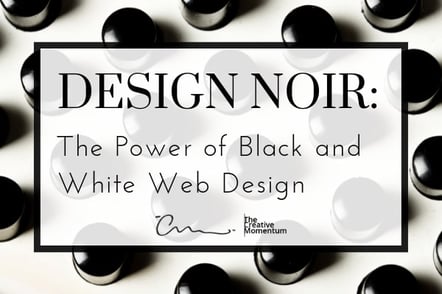
We all know how complicated web design can be.
One of the most interesting aspects to review in this area is color. The psychology of color in web design is a topic that gets plenty of attention, and for good reason. Color is a huge part of how viewers perceive content, engage with material, and form an overall impression of a brand’s persona. In fact, Google found that the average reader will judge the aesthetics of your site and make the decision to leave or stay in as few as 50 milliseconds—faster than we can consciously process.
Naturally, color choice plays a big part in this assessment. But what happens when you want to ditch these carefully-chosen color schemes in favor of something a bit more innovative? As we’ll review, colorphobia just might be the secret to powerful web design.
Color Is Context
We’re used to seeing color in everything. Colors provide context and emotional cues that tap into well-ingrained psychological principles. We’ve all heard these ideas at one time or another. Blues are open and soothing; yellows are vibrant and energetic. You get the idea.
It’s common to see websites play on these basic color profiles to create specific images for their companies, with the data showing that colors can increase brand recognition by as much as 80 percent. But when we take away these colors, our perceptions completely change.
Without colors as visual anchors, we tend to focus more on the other design elements in a composition:
- Textures
- Lines
- Contrast
- Visual balance
And so on. This effect is most apparent in black and white photos of people. Scroll through a few of these and you’ll see just how powerful this can be. When applied to the world of web design, this concept can be taken to extremes to create visually-striking layouts that stick out in readers’ minds.
Seeing Design In Black and White
Color is one of the most powerful tools in a designer’s arsenal, and the black/white color scheme is no exception. By sticking to monochromatic layouts, designers can create some interesting design concepts that other brands haven’t touched.
For a basic example, check out the website for the Amsterdam-based Sandberg Instituut. It’s almost completely in black and white, yet it retains a primarily white color scheme that gives the page an approachable and familiar feel. The basic white background paired with creative typography and minimal black design elements suggest simplicity and elegance; perfect for the professional image it’s trying to portray.
In this case, we can see how the black and white color scheme works as a minimalist design choice. It relies more on visual balance, informational hierarchies, and the content itself to drive engagement. It’s not flashy by today’s standards, but it’s simple and it does its job well.
Let’s look at another example—the personal website of Japanese designer Kentaro Shikura. This site takes an alternate approach to the black and white design methodology. Unlike the Sandberg Instituut, this page relies on predominantly black backgrounds with sharp, white lines cutting through the space.
For a design website, this approach is great. The black background implies power; it’s modern, confident, and attention-grabbing. From our perspective (and we should know!) these are great elements for designers to push in their marketing. Rather than playing it safe, this website takes a dramatic approach to its layout that’s memorable yet relatively simple.
And these examples are only the beginning. Black and white design is striking enough on its own, but when leveraged in conjunction with other design strategies, its versatility goes even farther.
Fringe Benefit: Pump It Up With a Splash of Color
Another interesting element in black and white design is how much more powerful it can make other colors. Look at Skinfinity to see what we mean.
When placed against a monochromatic background of blacks and grays, a splash of color pops and adds a powerful visual punch. The mild, skin-colored tones of each letter—which would be nearly indistinguishable in a normal color scheme—takes center stage and contrasts with the muted background. In this example, the company began with a black/white design but altered it slightly in support of its brand goals.
We like this example because it shows how versatile black/white design can be. It works well on its own, and it works as a foundation for other colors and design choices that help differentiate a brand. Research shows that, when assessing products, 62 to 90 percent of a customer’s assessment has to do with the colors presented.
With this in mind, it’s clear that black and white design can be a powerful tool, on its own or used side-by-side with other branded color schemes.
The Power of Originality
At its core, black and white design is all about simplicity. As we’ve mentioned before, no single color scheme will work for every brand, but black and white layouts come as close to an “all-purpose” style as we’ve seen.
Depending on how it’s used, it supports layouts that are simple, modern, engaging, and powerful. It’s not for everyone, but for the right brands, it’s a great way to differentiate yourself in an over-saturated marketplace.


